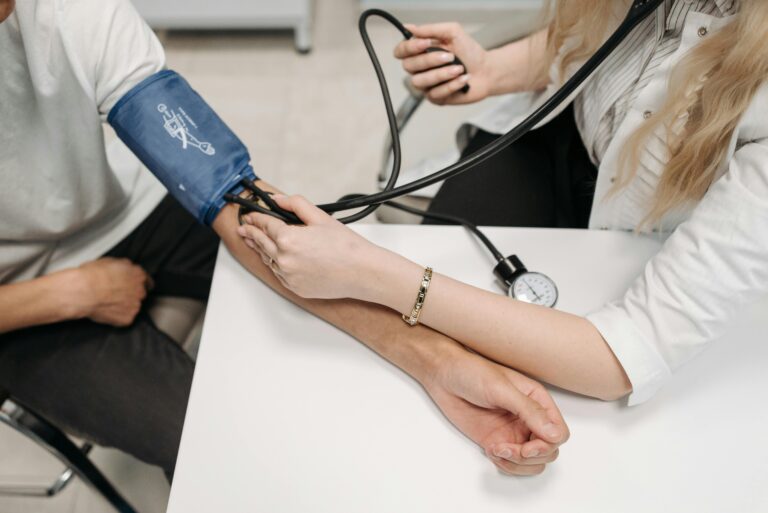Discover expert best strategies to manage colitis in 2025. Learn about symptoms, treatments, and lifestyle tips to improve your quality of life and maintain digestive health.

Recognizing Symptoms and Warning Signs
Let’s face it – your gut has a language of its own, and learning to interpret its signals is crucial for managing colitis effectively. Think of this section as your personal translator for understanding what your body is trying to tell you. As Dr. Sarah Chen, a leading gastroenterologist, puts it: “The key to managing colitis successfully is catching symptoms early and knowing when to seek help.”
Common Symptoms: The Universal Language of Colitis
Regardless of the type of colitis you’re dealing with, certain symptoms seem to be universal players in the game. These common symptoms include:
Primary Digestive Symptoms
Diarrhea (ranging from mild to severe)
Abdominal cramping and pain
Urgency to have bowel movements
Changes in stool consistency
Bloating and gas
Mucus in stools
General Body Symptoms
Fatigue and weakness
Decreased appetite
Unintended weight loss
Low-grade fever
Night sweats
General malaise
Symptom Intensity Scale:
Mild: Occasional symptoms, minimal impact on daily life
Moderate: Regular symptoms, some impact on activities
Severe: Frequent symptoms, significant impact on quality of life
Critical: Debilitating symptoms requiring immediate medical attention
Unique Symptoms: When Different Types Talk Differently
Just like each person has their own unique voice, different types of colitis can present with distinct symptoms. Let’s break it down:
Ulcerative Colitis
– Visible blood in stool (often mixed with mucus)
– Left-sided abdominal pain
– Tenesmus (feeling of incomplete evacuation)
– Rectal pain
– Night-time bowel movements
Crohn’s Colitis
– Right-sided abdominal pain
– Mouth sores
– Anal fissures or fistulas
– Patches of healthy tissue between inflamed areas
– Joint pain more common
Microscopic Colitis
– Watery diarrhea (rarely bloody)
– Weight loss more common
– Symptoms often worse at night
– Normal appearance during colonoscopy
– Frequent nocturnal bowel movements
Infectious Colitis
– Sudden onset of symptoms
– High fever
– Severe stomach cramps
– Often accompanied by vomiting
– Recent exposure to contaminated food/water
Red Flags: When Your Gut Screams “Emergency!”
Some symptoms are like alarm bells – they shouldn’t be ignored. Seek immediate medical attention if you experience:
🚨 Emergency Symptoms:
– Severe, unrelenting abdominal pain, try to rate the pain you are experiencing from 0 to 10, that is quite subjective, but you shouldn’t ignore pain judged from 8/10 and above.
– High fever (over 102°F/39°C)
– Profuse bleeding or blood clots in stool
– Severe dehydration signs
– Rapid heart rate, The most effective way to monitor your heart rate manually involves the following steps:
1. Locate Your Radial Pulse
– Place your index and middle fingers on the inside of your wrist, just below the base of the thumb.
– Avoid using your thumb, as it has its own pulse that can interfere with an accurate reading.
Mental status changes
2. Set a Timer For the most accurate measurement, set a timer for 60 seconds and count the number of beats you feel. If you prefer a quicker method, set the timer for 30 seconds and count the beats. Multiply this number by 2 to estimate your heart rate in beats per minute (BPM).
– Severe weakness or fainting
– Unable to keep liquids down for 24 hours
Impact on Other Body Systems: The Domino Effect
Colitis isn’t just about your gut – it can affect your entire body. Here’s how:
-Musculoskeletal System: Joint pain and swelling, Back pain, Reduced bone density, Muscle weakness.
– Skin and Eyes: Skin rashes or ulcers, Eye inflammation, Mouth sores, Skin tags.
Blood and Circulation: Anemia, Increased risk of blood clots, Changes in white blood cell counts, Inflammation markers in blood
– Mental Health: Anxiety about symptoms, Depression, Sleep disturbances, Social isolation
Documentation and Symptom Tracking: Becoming Your Health Detective
Tracking your symptoms is like keeping a diary of your gut’s daily story. Here’s how to do it effectively:
What to Track Daily:
1- Number of bowel movements
2- Stool consistency (use Bristol Stool Chart)
3- Presence of blood or mucus
4- Pain levels (0-10 scale)
5- Foods eaten
6- Stress levels
7- Sleep quality
8- Medications taken
Pro Tip:
Use a symptom-tracking app or download our printable symptom diary template to make recording easier!
Important Patterns to Notice:
– Time of day symptoms occur
– Relationship to meals
– Impact of stress
– Response to medications
– Environmental triggers
– Exercise effects
– Sleep quality correlation
– Creating Your Action Plan
– Based on your symptoms, develop a personal action plan:
Green Zone (Mild Symptoms)
Continue regular monitoring
Follow prescribed treatment plan
Maintain healthy lifestyle habits
Keep routine doctor appointments
Yellow Zone (Worsening Symptoms)
Increase symptom tracking frequency
Contact healthcare provider
Review and adjust diet
Consider stress reduction techniques
Red Zone (Severe Symptoms)
– Seek immediate medical attention
– Have emergency contacts ready
– Keep a hospital bag prepared
– Have important medical documents accessible
Documentation Tip:
Take photos of severe symptoms (when appropriate) to show your healthcare provider. This can help them better understand your condition’s severity.
Remember, your symptoms are your body’s way of communicating with you. Understanding and documenting these signals helps you manage colitis better and enables your healthcare team to provide more effective treatment.
Don’t hesitate to reach out to your healthcare provider if you’re unsure about any symptoms – it’s always better to err on the side of caution when it comes to your health.
Diagnostic Procedures and Tests to manage colitis
Diagnostic procedures are essential for evaluating and confirming the presence of various medical conditions. Below is an overview of the main diagnostic methods used in clinical practice.
• Initial Medical Evaluation Process
The initial evaluation of a patient begins with a detailed medical history and thorough physical examination. This helps collect information about past medical history, current symptoms, family history, and other relevant risk factors. The clinical examination focuses on identifying specific signs that guide a presumptive diagnosis and determine the need for further investigations.
• Blood Tests and Stool Analysis
Blood tests are a fundamental part of assessing inflammatory markers, organ function, and specific abnormalities associated with certain diseases. Examples include:
– Complete Blood Count (CBC) to check for anemia or signs of infection.
– Inflammatory markers such as C-reactive protein (CRP) and erythrocyte sedimentation rate (ESR).
– Liver function tests for identifying hepatic abnormalities.
Stool analyses are essential, especially for gastrointestinal disorders:
– Pathogen detection (bacteria, viruses, parasites).
– Fecal calprotectin levels to detect intestinal inflammation.
– Fecal occult blood test to screen for gastrointestinal bleeding.
• Imaging Studies (CT, MRI)
Imaging studies like computed tomography (CT) and magnetic resonance imaging (MRI) provide detailed information about the anatomy and function of organs.
– CT scan: Useful for assessing the abdomen and chest, offering cross-sectional images that help detect masses, vascular anomalies, or signs of perforation.
– MRI: Ideal for comprehensively analyzing soft tissues and neurological structures. MRI is beneficial because it does not involve ionizing radiation, making it a preferred option for repeat assessments.
• Endoscopic Procedures
Endoscopic procedures allow direct visualization of the mucosa of the digestive tract and other body cavities:
– Upper GI endoscopy (gastroscopy) to inspect the esophagus, stomach, and duodenum.
– Colonoscopy to examine the colon and detect polyps, lesions, or signs of colitis.
– Endoscopy with biopsy: Essential for diagnosing inflammatory or neoplastic diseases.
• Biopsy and Histological Examination
Biopsy involves taking a tissue sample for histological analysis. This step is crucial for establishing a definitive diagnosis, especially for neoplastic or inflammatory conditions:
Targeted biopsies during endoscopic or image-guided procedures.
Histopathological examination to assess cellular characteristics, detect malignancy, and identify specific histological changes.
These combined diagnostic methods ensure comprehensive and accurate evaluation, leading to a well-founded diagnosis and optimal treatment plan.
Modern Treatment Approaches for 2025
The management of various medical conditions has evolved significantly, with a focus on comprehensive and personalized approaches. Below are key treatment modalities that reflect the current and upcoming strategies expected for 2025.
• Medications (Anti-inflammatories, Biologics)
Pharmacological therapy remains a cornerstone in the treatment of many acute and chronic conditions. Advances in this field include:
Anti-inflammatories: These remain essential for managing inflammation and pain. Nonsteroidal anti-inflammatory drugs (NSAIDs) and corticosteroids are frequently used for acute control, while minimizing potential side effects through targeted formulations.
Biologic agents: The use of biologics, such as monoclonal antibodies, has expanded, particularly for autoimmune and inflammatory diseases. These medications target specific pathways involved in disease progression, offering greater efficacy and fewer side effects compared to traditional systemic therapies.

• Best Dietary Modifications and Nutritional Support to manage colitis
Dietary interventions are increasingly recognized as vital components of treatment, particularly in chronic conditions such as gastrointestinal disorders and metabolic diseases:
Personalized nutrition: Tailored dietary plans based on genetic, metabolic, and microbiome analyses help optimize patient outcomes.
Nutritional support: This includes supplementation when necessary to address deficiencies, such as iron, vitamin D, or omega-3 fatty acids, to support overall health and reduce disease flare-ups.
• Lifestyle Changes and Stress Management
Lifestyle modifications are key to improving long-term health outcomes and preventing disease recurrence:
Regular physical activity: Tailored exercise programs contribute to improved cardiovascular health, weight management, and reduced systemic inflammation.
Mindfulness and stress management techniques: Integrative practices like meditation, yoga, and cognitive-behavioral therapy (CBT) have been shown to positively impact the immune response and reduce stress-related disease exacerbations.
• Surgical Options When Necessary
Surgical intervention may be warranted when medical and conservative measures fail to achieve desired results:
Minimally invasive procedures: Laparoscopic and robotic-assisted surgeries have become the standard for many conditions, reducing recovery time and associated complications.
Elective and emergency surgeries: These are reserved for cases such as organ dysfunction, obstruction, or refractory disease states where other treatments have proven ineffective.
• Emerging Therapies and Clinical Trials
The field of treatment is dynamic, with numerous novel therapies and clinical trials shaping future practices:
Gene and cell-based therapies: Ongoing research into gene editing techniques like CRISPR and CAR T-cell therapy is promising for previously intractable conditions.
Microbiome modulation: Therapeutic interventions targeting the gut microbiota are under exploration for their role in chronic inflammation and immune modulation.
Innovative drug delivery systems: Advances in nanoparticle technology and sustained-release formulations aim to enhance drug bioavailability and patient adherence.
These modern treatment approaches reflect a shift towards personalized, integrated care that aligns with evolving scientific understanding and technological innovation.
Living Well with Colitis: Shortly Manage Colitis
Living with colitis requires a comprehensive management plan to help maintain quality of life, reduce flare-ups, and prevent complications. Below are key areas that contribute to effective daily living with colitis.
• Daily Management Strategies
If you want to effectively manage Colitis you should know that this involves consistent monitoring and proactive care:
Medication adherence: Taking prescribed medications regularly, including anti-inflammatories or immunosuppressants, as directed by a healthcare provider.
Symptom tracking: Keeping a journal to record symptoms, triggers, and responses to treatments can help identify patterns and adjust management strategies.
Regular check-ups: Routine visits to healthcare providers help monitor disease activity and make necessary adjustments to treatment plans.
• Diet and Nutrition Tips
Diet plays an essential role in managing colitis and reducing inflammation:
1- Low-residue diet during flares: Reducing fiber intake can help ease symptoms during active flare-ups by minimizing bowel movements and irritation.
2- Anti-inflammatory foods: Incorporating foods rich in omega-3 fatty acids (e.g., fish, flaxseeds) and antioxidants (e.g., fruits, vegetables) can help reduce inflammation.
3- Stay hydrated: Maintaining hydration is crucial, especially if diarrhea is frequent, to prevent dehydration.
4- Avoid trigger foods: Spicy, fatty, and highly processed foods should be avoided as they can exacerbate symptoms in some individuals.
• Stress Reduction Techniques
Stress is a known trigger for colitis flare-ups, making stress management an integral part of daily care:
Mindfulness and meditation: Techniques such as mindfulness-based stress reduction (MBSR) can help reduce perceived stress and improve emotional well-being.
Breathing exercises: Practicing deep-breathing exercises can help manage acute stress responses.
Therapeutic practices: Yoga, tai chi, and guided relaxation have been shown to promote relaxation and potentially reduce disease activity.
• Exercise and Physical Activity Guidelines
Regular physical activity can support overall health and reduce inflammation:
Low-impact exercises: Activities such as walking, swimming, and cycling are gentle on the body and can be sustained even during mild flare-ups.
Strength training: Light resistance training can help maintain muscle mass, which may be affected by inflammation and medication side effects.
Flexibility routines: Stretching exercises and practices like Pilates can improve overall mobility and reduce stiffness.
If you want to know more about specific Ulcerative Colitis Diet, click here
• Support Groups and Resources
Connecting with others who have similar experiences can provide emotional support and practical advice:
– Patient advocacy groups: Organizations like the Crohn’s & Colitis Foundation offer resources, educational materials, and community forums.
– Local and online support groups: Joining these groups can help individuals share coping strategies and gain encouragement from others who understand the challenges of living with colitis.
– Mental health support: Accessing counseling or therapy can be beneficial for managing the emotional aspects of living with a chronic illness.
Adopting these strategies can greatly improve the day-to-day experience of individuals who want to manage colitis, fostering a more balanced and fulfilling lifestyle while managing their condition.
Conclusion:
Understanding your specific type of colitis is crucial for effective treatment and management. Remember, you’re not alone in this journey! With proper medical care, lifestyle adjustments, and the support of healthcare professionals, most people with colitis can lead full, active lives. Don’t hesitate to reach out to your healthcare provider to discuss your symptoms or concerns. Together, we can work toward better digestive health and overall well-being!




